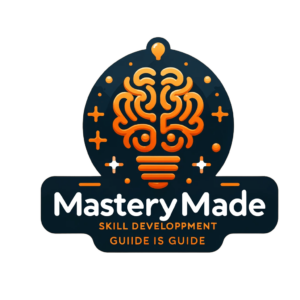In our constantly connected world, seeking a balance between technology and life is becoming increasingly important. We’re here to guide you through the nuances of digital detox mastery, advocating for the cultivation of healthy digital habits. Reducing screen time isn’t just about cutting back on hours spent staring at screens; it’s about reclaiming our time and recharging our minds. By learning and integrating practical life hacks, we can prioritize our wellness in this digital age.
Join us as we explore strategies and tips designed to reduce our screen time and enhance our everyday life. It’s time to rewrite our digital narratives and infuse our days with a more meaningful, engaged existence away from the glow of our devices. Let’s embark on this journey together, fostering a healthier balance and transforming the way we interact with our technology.
Key Takeaways
- Understanding the importance of reducing screen time for a healthier lifestyle.
- Embracing digital detox mastery to gain control over our tech consumption.
- Incorporating life hacks that promote healthy digital habits.
- Reaffirming the value of balance between our digital and real-life activities.
- Initiating small changes that make a significant impact on our well-being.
Understanding the Impact of Excessive Screen Time
The digital age has ushered in remarkable technological advances, but not without a cost. As we integrate screens more deeply into our daily lives, it’s crucial to acknowledge and address the potential health risks associated with this behavior. Let’s explore the facets of technology addiction, understand the consequences of excessive screen time, and learn how to practice mindfulness in assessing our own tech habits.

Recognizing Technology Addiction
Technology addiction can be as subtle as it is detrimental. It often begins innocuously, with extra minutes scrolling through social media or binge-watching favorite shows. But slowly, our need to stay connected can turn compulsive. We may notice that without our devices, we feel anxious or lost. Mindfulness is a powerful tool in recognizing these addictive patterns—by being present and self-aware, we can take the first step towards responsible use.
The Health Risks Associated with Overuse
Extended screen time is not merely a bad habit; it’s a health hazard. The effects can manifest physically, through eye strain or sleep disturbances, and psychologically, by exacerbating stress or hindering social interactions. By understanding these health risks, we can motivate ourselves to adopt healthier digital behaviors that prioritize our well-being.
Assessing Your Personal Screen Time
Digital wellness starts with an honest assessment of our screen time. How many hours are spent in front of a screen for non-essential activities? Which apps consume most of our attention? Answering these questions can be eye-opening and serve as a catalyst for change. Taking regular stock of our device usage helps us to make informed decisions about where to cut back and how to reintroduce balance into our digital lives.
“Mindfulness is the key to recognizing early signs of technology addiction and taking the necessary steps to foster a healthier relationship with our screens.”
Digital Detox Mastery: Embarking on a Tech-Free Journey
As we navigate our digital age, digital detox mastery has become not just a concept but a necessary discipline for those seeking to maintain their well-being. It’s essential for us to understand and embrace the art of unplugging from our devices to restore balance in our lives. By embarking on a tech-free journey, we can rediscover the joys and possibilities of a life less tethered to screens. Here is our guide to initiating your very own detox plan and stepping confidently towards digital wellness.
- Recognize Your Need for a Digital Detox
- Assess Your Technology Usage
- Set Clear Objectives and Boundaries
In the heart of a successful digital detox is the commitment to withdrawal from digital connections to recharge mentally and physically. Our guide focuses on actionable steps designed to realign your tech use with your personal values and lifestyle.

| Steps to Digital Detox Mastery | Benefits |
|---|---|
| Creating Daily Tech-Free Zones | Improves Focus and Presence |
| Turning Off Notifications After Work | Reduces Stress and Anxiety |
| Weekly Unplugging for a Full Day | Strengthens Relationships and Encourages Outdoor Activities |
| Setting a No-Device Rule During Meals | Promotes Mindful Eating and Better Conversations |
| Using an Alarm Clock Instead of Phone | Leads to Healthier Sleep Patterns |
Whether it’s by setting firmer boundaries for work emails or giving yourself a full day each week away from screens, each step towards a tech-free existence amplifies the mastery of your digital detox. We encourage you to use these pillars as a detox plan for your unique path to a tech-free journey.
Strategies for Reducing Digital Distractions
In today’s world, digital distractions are a constant presence, undermining our productivity and affecting our mental health. However, by implementing simple yet effective strategies, we can reclaim our focus and enhance our screen time management. Let us walk you through some tactics to reduce digital noise and bring more clarity to your daily routine.
Turning Off Non-Essential Notifications
One of the first steps you can take is to turn off non-essential notifications. By customizing your devices to silence unnecessary pings from social media, promotional emails, and other distractions, you’ll be better equipped to concentrate on tasks that truly matter to you.
Cleaning Up Your Digital Clutter
No different than a tidy house leading to a clear mind, digital clutter cleanup can immensely improve your digital well-being. Start by organizing your files, deleting unneeded apps, and unsubscribing from junk emails. This effort will not only streamline your virtual spaces but also help reduce the cognitive load that clutter brings.
Using Apps to Monitor and Limit Usage
Fortunately, various apps have been developed to aid us in monitoring app usage and managing screen time. These tools provide valuable insights into our digital habits and offer features to limit our usage of distracting applications and websites.
| App Name | Features | Platforms |
|---|---|---|
| Freedom | Blocks websites and apps, schedule distraction-free sessions | iOS, Mac, Windows, Android, Chrome |
| RescueTime | Tracks time spent, detailed reports, goal setting | PC, Mac, Android, Linux, Chrome |
| StayFocusd | Customizable website blocking, time restrictions | Chrome |
We encourage you to try these strategies and apps to minimize digital distractions and take steps towards more mindful screen time management. Integrating these methods into your daily life can lead to significant improvements in focus, productivity, and overall digital well-being.
Mindfulness Techniques to Combat Screen Addiction
In our journey towards digital wellness, mindfulness stands out as a powerful ally in the battle against screen addiction. By fostering awareness of the present moment, mindfulness techniques enable us to break free from the compulsive cycle of digital consumption. Here are a few methods that we’ve found particularly effective:
- Meditation: Dedicate time each day to meditative practice, focusing on breathing and present-moment awareness to decrease the urge to reach for your device.
- Conscious Usage: Make it a habit to ask yourself whether your screen time is intentional or merely a default activity to fill the silence.
- Scheduled Breaks: Regularly schedule short breaks to step away from screens and recharge your mental space.
These practices promote digital wellness and can help create a more balanced relationship with our devices. To give you a clearer picture, let’s explore the daily mindfulness schedule that we’ve found to be particularly effective.
| Time | Activity | Benefit |
|---|---|---|
| Morning | 5-minute meditation | Starts the day with a focus on internal well-being over external stimuli |
| Midday | Mindful walking | Encourages physical activity and mental clarity away from a screen |
| Evening | Journaling screen time usage | Promotes reflection and accountability of daily device habits |
These mindfulness techniques not only help in regulating screen time but also enhance overall life quality by nurturing a present, engaged, and intentional state of being. We encourage you to incorporate these into your daily routine and experience the transformation towards a state of digital wellness firsthand.
Building a Detox Plan for a Balanced Digital Diet
As we embrace the journey towards digital wellness, devising an effective detox plan is as crucial as setting a balanced diet for our physical health. It’s about creating a regimen that doesn’t just reduce screen time but also enriches our lives with meaningful experiences away from the glare of our digital devices. Let us guide you through crafting a plan that balances your digital consumption with the rest of your life’s priorities.
Setting Realistic Goals for Screen Time Reduction
In our quest for moderation, the notion of attainable screen time reduction goals is paramount. It’s vital to identify specific, measurable objectives that feel challenging yet achievable. Perhaps it’s cutting down an hour of social media use daily or dedicating weekends to being completely tech-free. Remember, small consistent changes often lead to substantial long-term results. Our digital detox should customize to fit within our unique lifestyle, gradually steering us towards healthier digital habits.
Establishing Tech-Free Zones and Times
Creating tech-free zones and times in our lives can inspire moments of tranquility and presence. Imagine dining areas where conversations thrive without the interruption of notifications, or bedrooms that serve as sanctuaries for rest instead of late-night scrolling sessions. By designating specific times and spaces where technology is off-limits, we encourage ourselves and those around us to engage more deeply with the world away from screens.
Creating a Support System
Embarking on any significant change is more manageable when surrounded by a support system. Sharing our digital wellness goals with friends, family, or a digital detox community can provide the encouragement and accountability necessary to persevere. Whether it’s checking in with a partner about daily screen usage or participating in group challenges to stay off our devices, leaning on one another is a pillar of success in our collective digital detox.
FAQ
What are some effective life hacks for reducing screen time?
To reduce screen time effectively, consider setting specific goals, using app limit features on your devices, creating tech-free zones in your home, engaging in screen-free hobbies, and scheduling regular breaks away from screens throughout the day. It’s all about finding the right balance between technology and life to cultivate healthy digital habits.
How can I tell if I’m addicted to technology?
Indicators of technology addiction include feeling anxious or restless without your devices, spending more time online than intended, neglecting responsibilities or relationships because of technology use, and experiencing difficulty focusing on tasks without checking your device. Mindfulness practices can help you assess your level of dependency on technology.
What are the health risks of excessive screen time?
The health risks associated with excessive screen time can include physical strain on your eyes, poor posture, disrupted sleep patterns, reduced physical activity leading to weight gain or cardiovascular issues, as well as potential mental health impacts, such as anxiety or depression. Reducing screen time is essential for maintaining both physical and digital wellness.
What steps can I take to start a digital detox?
Begin your digital detox by setting clear goals for what you want to achieve and why. Unplug by turning off notifications, having tech-free hours or days, and informing others of your plan. Dedicate time to offline activities you enjoy, which helps to distract from the urge to use digital devices. Follow a detox plan consistently for best results.
How do I manage my screen time more effectively?
To manage your screen time, start by using apps that monitor how much time you’re spending on your devices. Set usage limits, keep track of your most distracting apps, and make conscious decisions to turn off non-essential notifications. Regularly declutter your digital spaces to keep digital distractions at a minimum.
Can mindfulness really help with screen addiction?
Absolutely! Mindfulness helps you become more aware of your habits, including screen usage. Techniques like meditation, breathing exercises, and being intentional with technology can allow you to recognize the urge to use devices compulsively and choose to engage in more fulfilling activities instead.
What should I include in my detox plan for a balanced digital diet?
Your detox plan should encompass clear and realistic goals for screen time reduction, designated tech-free zones and times, and potentially involve friends or family members as a support system to help you stick to your plan. It’s also important to anticipate challenges and plan for how to handle them without reverting to old habits.











